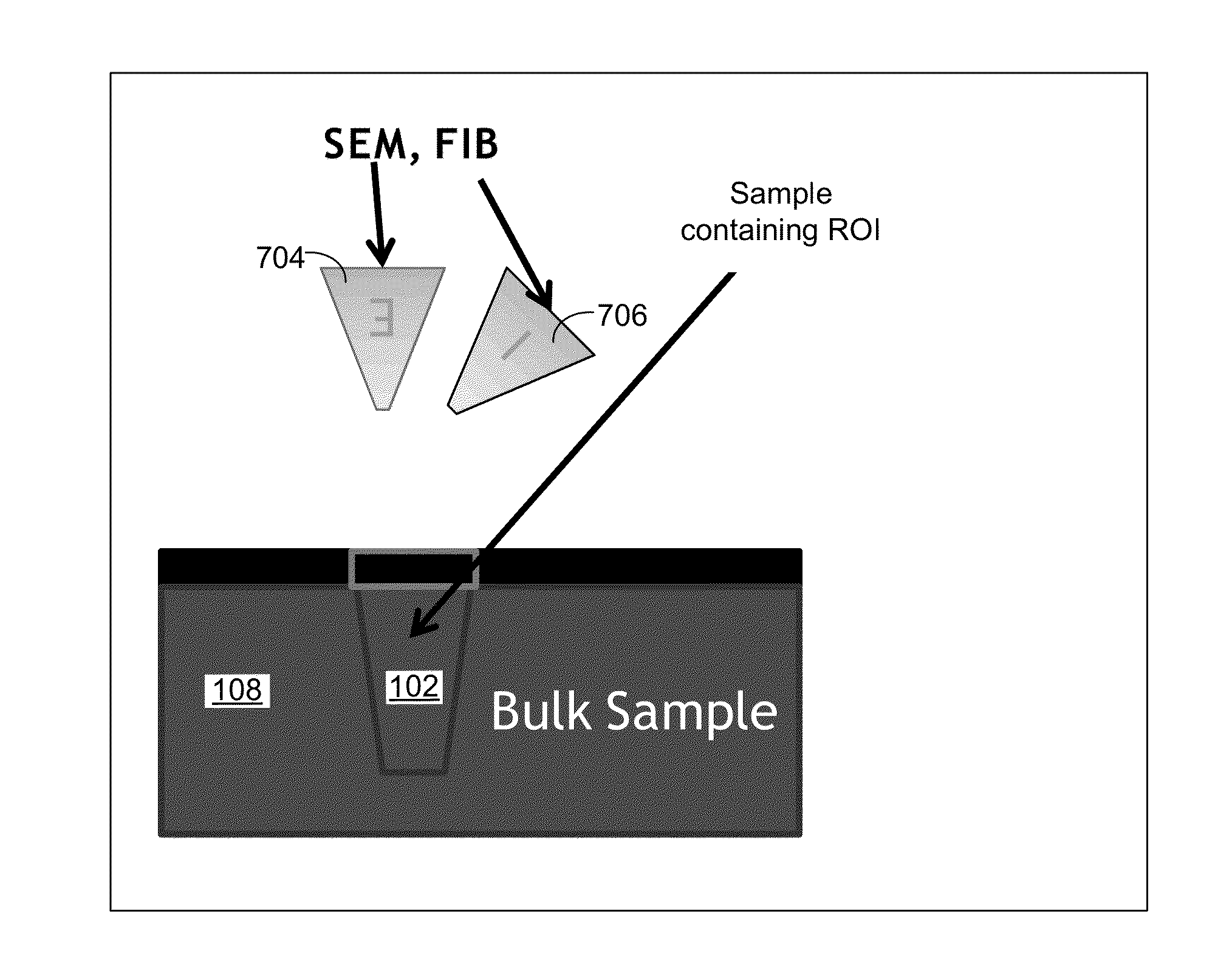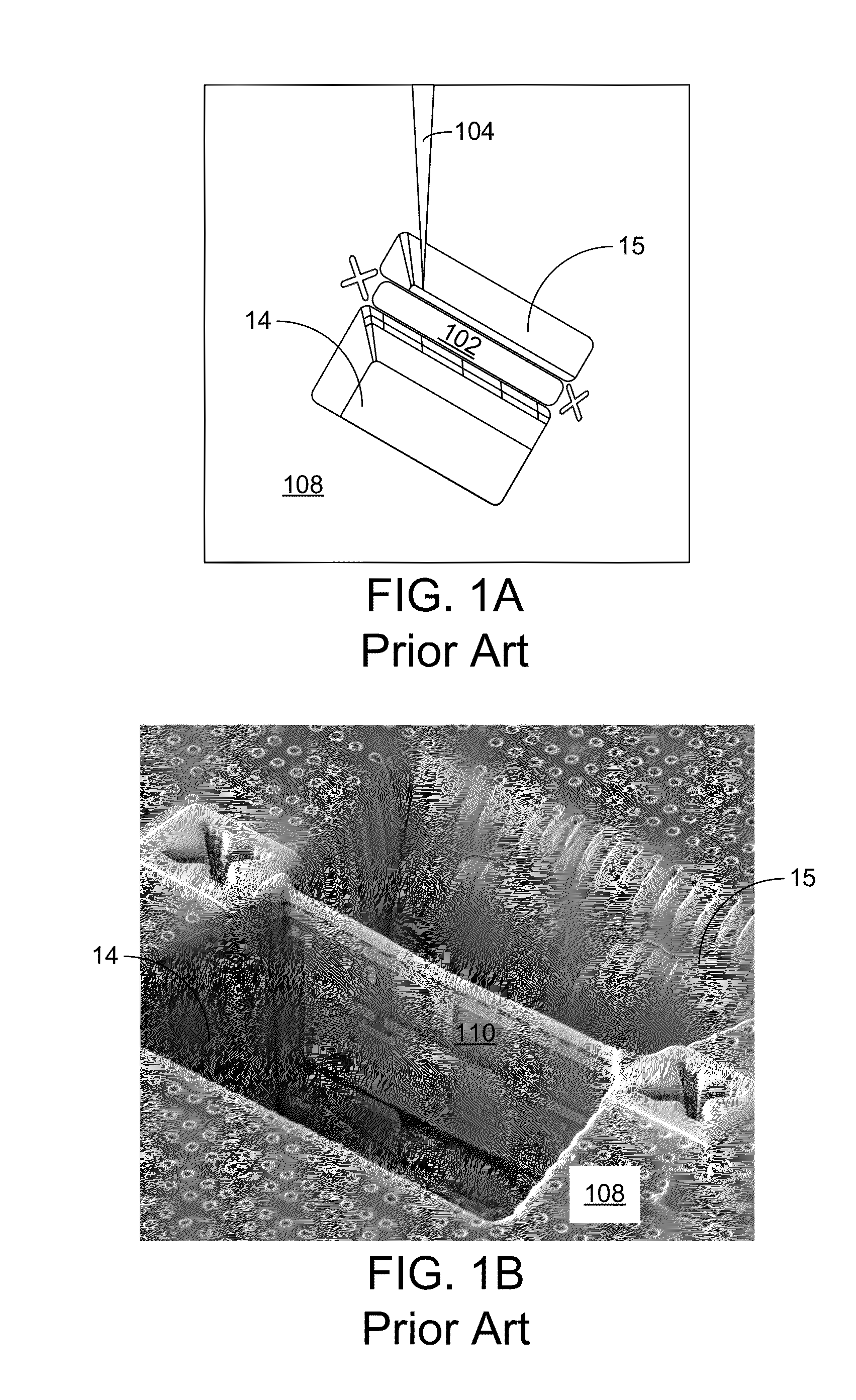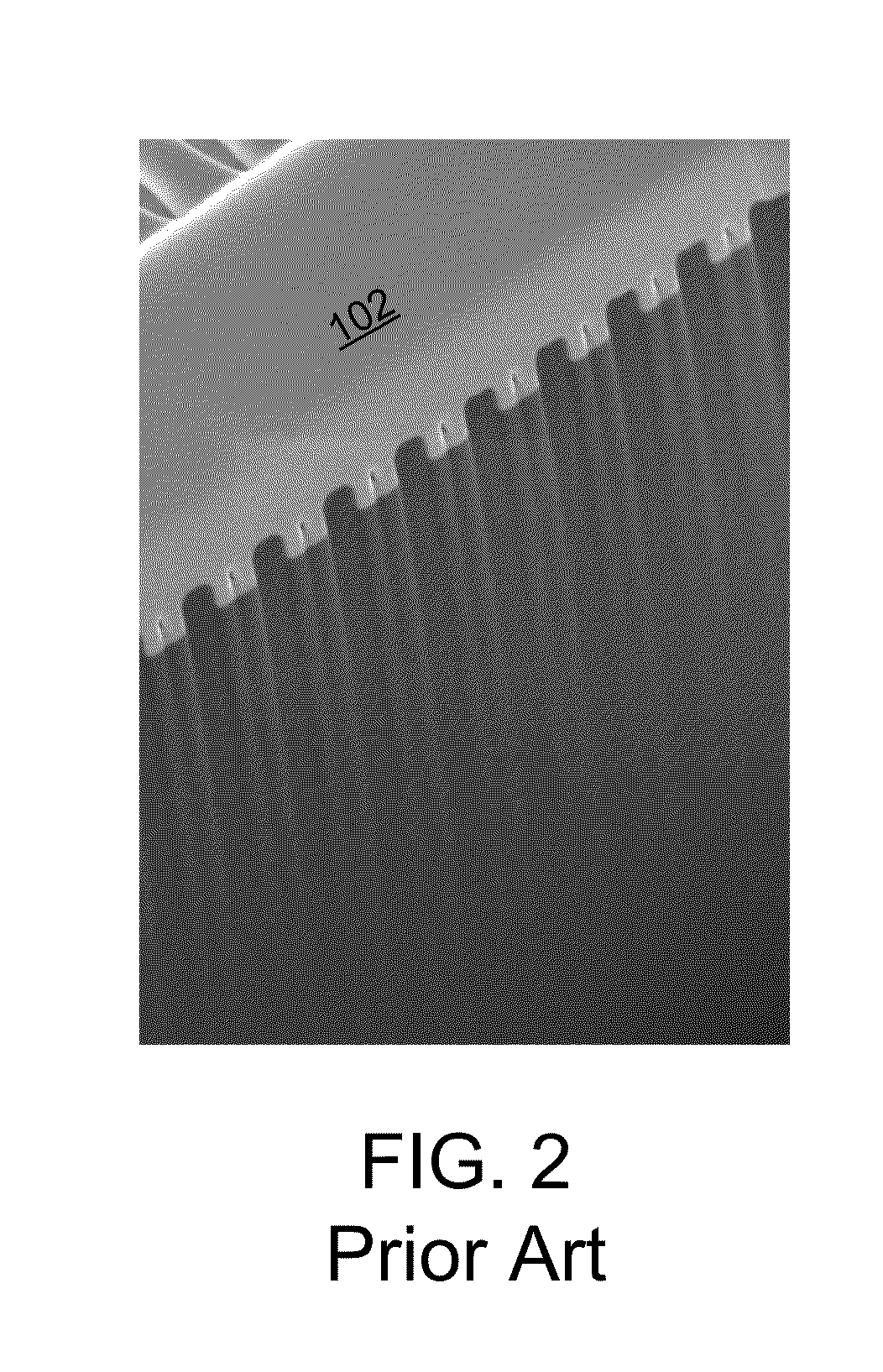Method for preparing samples for imaging
a technology of electron microscopy and sample preparation, applied in the field of electron microscopy sample preparation, can solve the problems of lamella bending, over-milling, and other catastrophic defects, and achieve the effects of reducing or eliminating curtaining, and reducing or preventing bending and curtaining
- Summary
- Abstract
- Description
- Claims
- Application Information
AI Technical Summary
Benefits of technology
Problems solved by technology
Method used
Image
Examples
Embodiment Construction
[0046]FIG. 10 is a flowchart showing the steps of an embodiment of the invention. FIGS. 11A-11D shows the sample at different stages of processing. FIG. 11A shows the sample 1102 includes a layer of aluminum oxide 1104 above a layer of aluminum 1106. In step 1002, a region of interest on the sample is identified. In step 1004, a protective layer 1110 is deposited onto the surface of the sample 1104 over the region of interest. The protective layer can be deposited, for example, using ion beam-induced deposition, electron beam-induced deposition, or other local deposition process. Deposition precursors are well known and can include for example, metalloorganic compounds, such as tungsten hexacarbonyl and methylcyclopentadienlylplatinum (IV) trimethyl for depositing metals, or hexamethylcyclohexasiloxane for depositing an insulator.
[0047]In step 1006, a trench 1112 is milled in the sample to expose a cross section 1114 as shown in FIG. 11A. The ion beam 1116 is typically oriented norm...
PUM
| Property | Measurement | Unit |
|---|---|---|
| beam current | aaaaa | aaaaa |
| thick | aaaaa | aaaaa |
| thickness | aaaaa | aaaaa |
Abstract
Description
Claims
Application Information
 Login to View More
Login to View More - R&D
- Intellectual Property
- Life Sciences
- Materials
- Tech Scout
- Unparalleled Data Quality
- Higher Quality Content
- 60% Fewer Hallucinations
Browse by: Latest US Patents, China's latest patents, Technical Efficacy Thesaurus, Application Domain, Technology Topic, Popular Technical Reports.
© 2025 PatSnap. All rights reserved.Legal|Privacy policy|Modern Slavery Act Transparency Statement|Sitemap|About US| Contact US: help@patsnap.com



